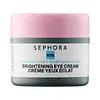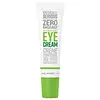What's inside
What's inside
 Key Ingredients
Key Ingredients

 Benefits
Benefits

 Concerns
Concerns

 Ingredients Side-by-side
Ingredients Side-by-side

Water
Skin ConditioningCaprylic/Capric Triglyceride
MaskingGlycerin
HumectantGlyceryl Stearate Citrate
EmollientHeptyl Undecylenate
EmollientButylene Glycol
HumectantSilica
AbrasiveJojoba Esters
EmollientC10-18 Triglycerides
EmollientHydroxyethyl Acrylate/Sodium Acryloyldimethyl Taurate Copolymer
Emulsion StabilisingCaffeine
Skin ConditioningSodium Polyacrylate
AbsorbentHydroxyacetophenone
AntioxidantTocopheryl Acetate
AntioxidantCaprylyl Glycol
EmollientSodium Hyaluronate
HumectantPolysorbate 60
EmulsifyingSorbitan Isostearate
EmulsifyingPotassium Cetyl Phosphate
EmulsifyingSodium Benzoate
MaskingChlorella Vulgaris Extract
Skin ConditioningSodium Phytate
Tocopherol
AntioxidantWater, Caprylic/Capric Triglyceride, Glycerin, Glyceryl Stearate Citrate, Heptyl Undecylenate, Butylene Glycol, Silica, Jojoba Esters, C10-18 Triglycerides, Hydroxyethyl Acrylate/Sodium Acryloyldimethyl Taurate Copolymer, Caffeine, Sodium Polyacrylate, Hydroxyacetophenone, Tocopheryl Acetate, Caprylyl Glycol, Sodium Hyaluronate, Polysorbate 60, Sorbitan Isostearate, Potassium Cetyl Phosphate, Sodium Benzoate, Chlorella Vulgaris Extract, Sodium Phytate, Tocopherol
Water
Skin ConditioningGlycerin
HumectantCetyl Alcohol
EmollientPyrus Malus Fruit Extract
Skin ConditioningAluminum Starch Octenylsuccinate
AbsorbentPropanediol
SolventCaprylic/Capric Triglyceride
MaskingStearyl Alcohol
EmollientPentylene Glycol
Skin ConditioningHydrogenated Olive Oil
Skin ConditioningMaltodextrin
AbsorbentCetearyl Olivate
Cera Alba
EmollientCaffeine
Skin ConditioningSodium Phytate
Olea Europaea Fruit Oil
MaskingAvena Sativa Bran Extract
AbrasiveSorbitan Olivate
EmulsifyingLactobacillus
Skin ConditioningXanthan Gum
EmulsifyingOlea Europaea Oil Unsaponifiables
Skin ConditioningTocopheryl Acetate
AntioxidantCocos Nucifera Fruit Extract
EmollientAspalathus Linearis Leaf Extract
Skin ConditioningLycium Barbarum Fruit Extract
AstringentPunica Granatum Extract
AstringentVitis Vinifera Seed Extract
AntimicrobialCitrus Aurantium Dulcis Peel Extract
Emulsion StabilisingColeus Barbatus Root Extract
Skin ConditioningLeontopodium Alpinum Extract
Skin ConditioningPeucedanum Ostruthium Leaf Extract
Skin ConditioningLeuconostoc/Radish Root Ferment Filtrate
AntimicrobialPinus Cembra Wood Extract
Skin ConditioningCamellia Sinensis Leaf Extract
AntimicrobialPalmitic Acid
EmollientStearic Acid
CleansingSodium PCA
HumectantPhenethyl Alcohol
MaskingSodium Hyaluronate
HumectantWater, Glycerin, Cetyl Alcohol, Pyrus Malus Fruit Extract, Aluminum Starch Octenylsuccinate, Propanediol, Caprylic/Capric Triglyceride, Stearyl Alcohol, Pentylene Glycol, Hydrogenated Olive Oil, Maltodextrin, Cetearyl Olivate, Cera Alba, Caffeine, Sodium Phytate, Olea Europaea Fruit Oil, Avena Sativa Bran Extract, Sorbitan Olivate, Lactobacillus, Xanthan Gum, Olea Europaea Oil Unsaponifiables, Tocopheryl Acetate, Cocos Nucifera Fruit Extract, Aspalathus Linearis Leaf Extract, Lycium Barbarum Fruit Extract, Punica Granatum Extract, Vitis Vinifera Seed Extract, Citrus Aurantium Dulcis Peel Extract, Coleus Barbatus Root Extract, Leontopodium Alpinum Extract, Peucedanum Ostruthium Leaf Extract, Leuconostoc/Radish Root Ferment Filtrate, Pinus Cembra Wood Extract, Camellia Sinensis Leaf Extract, Palmitic Acid, Stearic Acid, Sodium PCA, Phenethyl Alcohol, Sodium Hyaluronate
 Reviews
Reviews

Ingredients Explained
These ingredients are found in both products.
Ingredients higher up in an ingredient list are typically present in a larger amount.
Caffeine is most associated with coffee, tea, and cacao. In skincare, it helps with calming inflammation and is rich in antioxidants.
While caffeine is used to treat cellulite and and dark circles, further studies are needed to prove this. It has been believed to help with these skin conditions due to its ability to dilate blood vessels and increase blood flow.
Some studies are looking into caffeine's ability to protect against UV rays.
Learn more about CaffeineThis ingredient is an emollient, solvent, and texture enhancer. It is considered a skin-softener by helping the skin prevent moisture loss.
It helps thicken a product's formula and makes it easier to spread by dissolving clumping compounds.
Caprylic Triglyceride is made by combining glycerin with coconut oil, forming a clear liquid.
While there is an assumption Caprylic Triglyceride can clog pores due to it being derived from coconut oil, there is no research supporting this.
Learn more about Caprylic/Capric TriglycerideGlycerin is already naturally found in your skin. It helps moisturize and protect your skin.
A study from 2016 found glycerin to be more effective as a humectant than AHAs and hyaluronic acid.
As a humectant, it helps the skin stay hydrated by pulling moisture to your skin. The low molecular weight of glycerin allows it to pull moisture into the deeper layers of your skin.
Hydrated skin improves your skin barrier; Your skin barrier helps protect against irritants and bacteria.
Glycerin has also been found to have antimicrobial and antiviral properties. Due to these properties, glycerin is often used in wound and burn treatments.
In cosmetics, glycerin is usually derived from plants such as soybean or palm. However, it can also be sourced from animals, such as tallow or animal fat.
This ingredient is organic, colorless, odorless, and non-toxic.
Glycerin is the name for this ingredient in American English. British English uses Glycerol/Glycerine.
Learn more about GlycerinSodium Hyaluronate is hyaluronic acid's salt form. It is commonly derived from the sodium salt of hyaluronic acid.
Like hyaluronic acid, it is great at holding water and acts as a humectant. This makes it a great skin hydrating ingredient.
Sodium Hyaluronate is naturally occurring in our bodies and is mostly found in eye fluid and joints.
These are some other common types of Hyaluronic Acid:
Learn more about Sodium HyaluronateSodium Phytate is the synthetic salt form of phytic acid. Phytic acid is an antioxidant and can be found in plant seeds.
Sodium Phytate is a chelating agent. Chelating agents help prevent metals from binding to water. This helps stabilize the ingredients and the product.
Tocopheryl Acetate is AKA Vitamin E. It is an antioxidant and protects your skin from free radicals. Free radicals damage the skin by breaking down collagen.
One study found using Tocopheryl Acetate with Vitamin C decreased the number of sunburned cells.
Tocopheryl Acetate is commonly found in both skincare and dietary supplements.
Learn more about Tocopheryl AcetateWater. It's the most common cosmetic ingredient of all. You'll usually see it at the top of ingredient lists, meaning that it makes up the largest part of the product.
So why is it so popular? Water most often acts as a solvent - this means that it helps dissolve other ingredients into the formulation.
You'll also recognize water as that liquid we all need to stay alive. If you see this, drink a glass of water. Stay hydrated!
Learn more about Water